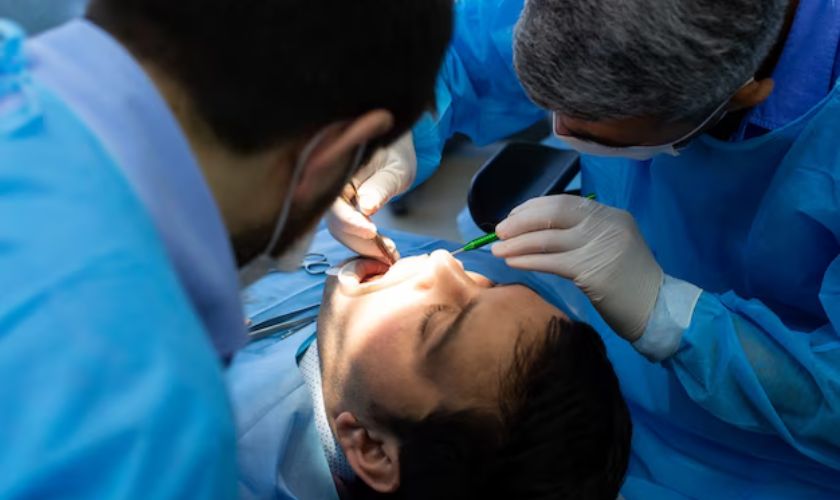Maintaining optimal oral health goes beyond regular brushing and flossing; it often involves more advanced procedures like gum surgery. Gum surgery, or periodontal surgery, is a specialised dental procedure to treat various gum-related issues. This comprehensive guide will delve into gum surgery, discussing its types, reasons, benefits, and recovery process.
Understanding Gum Surgery
Gum surgery is a dental procedure that focuses on correcting and treating problems within the gum tissues and bone supporting the teeth. It is typically performed by a periodontist, a dentist specialising in preventing, diagnosing, and treating periodontal diseases.
Types Of Gum Surgery
There are variation in Gum surgery, let’s see below:
- Gingival Flap Surgery: This procedure involves lifting a section of gum tissue to access and clean the root of the tooth and underlying bone. It is commonly used to treat advanced gum disease and promote gum tissue reattachment.
- Gingivectomy: In cases of severe gum disease or overgrown gum tissue, a gingivectomy removes and reshapes excess tissue, reducing the pockets where bacteria can accumulate.
- Grafting Procedures: Gum grafting involves taking tissue from one area (often the palate) and transplanting it to areas with receding gums. This procedure helps cover exposed tooth roots and improves aesthetics.
- Crown Lengthening: This surgery exposes more of the tooth’s surface for various reasons, such as preparing for a dental crown or improving the appearance of a “gummy” smile.
- Osseous Surgery: Also known as pocket reduction surgery, osseous surgery involves reshaping the bone around the teeth to reduce pockets where bacteria gather in cases of advanced gum disease.
Reasons For Gum Surgery
Gum surgery may be necessary for various reasons, including:
- Advanced gum disease (periodontitis)
- Gum recession
- Pocket formation between teeth and gums
- Exposed tooth roots
- Cosmetic improvements
- Tooth preparation for other dental procedures
Benefits Of Gum Surgery
Gum surgery gives some benefits, let’s discuss about this below:
- Improved Oral Health: Gum surgery can effectively treat gum disease, preventing further damage to the supporting structures of the teeth and reducing the risk of tooth loss.
- Enhanced Aesthetics: Procedures like gum grafting and crown lengthening can significantly improve the appearance of your smile by correcting issues like receding gums or a gummy smile.
- Preservation of Teeth: Treating gum disease and addressing underlying issues can help save teeth that might otherwise be at risk of extraction.
- Reduced Sensitivity: Gum surgery can cover exposed tooth roots, alleviating tooth sensitivity to hot or cold temperatures.
- Boosted Confidence: A healthy smile can positively impact self-esteem and confidence.
Recovery And Aftercare
Recovery from gum surgery varies depending on the type of procedure performed. Generally, patients are advised to:
- Follow post-operative instructions carefully.
- Maintain good oral hygiene practices.
- Avoid hard, crunchy, or spicy foods that may irritate the surgical site.
- Attend follow-up appointments to monitor healing.
Conclusion
Gum surgery is vital in maintaining optimal oral health and addressing gum-related issues. Gum surgery procedures have become more effective and comfortable with advancements in dental techniques and technologies. If you’re experiencing gum problems or have concerns about oral health, consulting a qualified periodontist can help you explore the best treatment options and pave the way for a healthier, more confident smile. Remember, a healthy smile starts with healthy gums!

